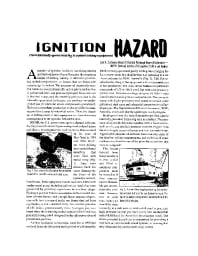Mining Publication: Ignition Hazard From Internally-generated H2 in Sealed Mining Equipment
Original creation date: July 2001
Authors: IA Zlochower
A number of ignition incidents involving mining and farm equipment have illustrated the surprising danger of drilling, cutting, or otherwise penetrating sealed compartments or frames that are filled with metal scrap for ballast. The presence of chemically-reactive metals (or electrochemically-active pairs), such as zinc in galvanized steel, can produce hydrogen from moisture in the steel scrap, and the resulting pressure, due to the internally-generated hydrogen, can produce an easily-ignited gas jet when the sealed component is penetrated. Hydrogen or methane production is also possible in contaminated steel scrap by microbial action. Thus, the simple act of drilling a hole in such equipment can have disastrous consequences to the operator behind the drill. The lesson learned from these incidents is that sealed and filled equipment components must be treated as if they contained a flammable gas at considerable pressure. Penetration of such equipment should be done remotely, in a safe area, or with a drill used to penetrate high-pressure natural gas lines safely (the method that both NIOSH and the Australian investigators used). The above potential hazard can be minimized by providing a vent hole or valve in such sealed systems, or insuring that only clean and dry-carbon steel scrap is used.

- Cableless Electronic Surveying Systems for Horizontal Holes
- Degasification and Production of Natural Gas From an Air Shaft in the Pittsburgh Coalbed
- Drill Monitor With Strata Strength Classification in Near-Real Time
- Drill Rig Incident
- Evaluations of a noise control for roof bolting machines
- The Evolution of Drill Bit and Chuck Isolators to Reduce Roof Bolting Machine Drilling Noise
- Ignition of Methane-Air Mixtures by Laser Heated Small Particles
- In-Mine Test of the Bureau of Mines Preproduction Wireless Survey System
- Noise Exposure and Overhead Power Line (OPL) Safety Hazards at Surface Drilling Sites
- Sound Power Level Study of a Roof Bolter